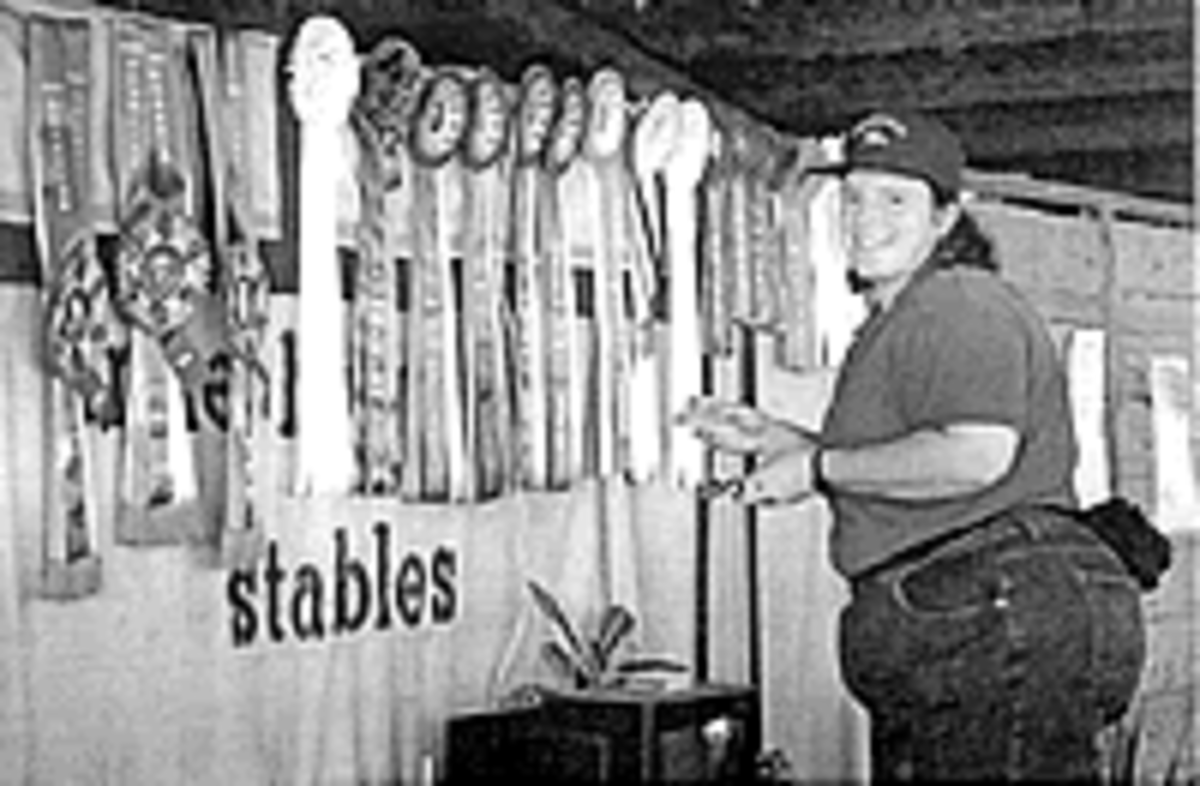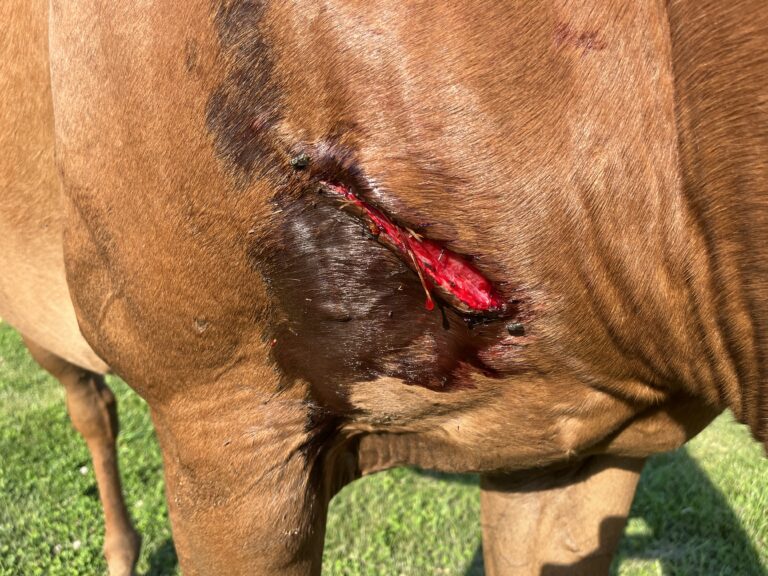Question:Some horses rotate their fetlocks outward as the hoof leaves the ground at the walk. I’ve never seen one of the “great dressage movers” walk this way. Is it a clue to a specific conformation feature or defect? Does it suggest a potential soundness problem?

Answer: There can be several causes of the type of rotation of the fetlock you are describing, and of course the relation to potential soundness would depend on the cause. The first factor to determine is whether the fetlock rotation is due to the natural conformation of the horse or is related to the horse’s shoeing.
To determine if this is a conformational problem, view the horse directly from the front, with both front legs square under the horse and evenly weighted. Visualize a line through the center of the forearm straight down to the ground. If the front leg is straight, this line should also travel straight through the centers of the cannon bone, pastern and hoof. Any deviation from the line could indicate where the leg might be “crooked.”
A horse that rotates at the fetlock may be deviated outward at the fetlock, a condition called fetlock varus, or “bow-legged” at the fetlock. This horse also would be toed-in because of the fetlock deviation. The horse may have straight legs, but be toed-in due to a rotation of the entire foreleg at the elbow. Toed-in conformation does affect the flight pattern of the hoof, as it forces the hoof to break over at the outside, which could cause the twisting at the fetlock to get the hoof back in the right place before setting it down again.
Radiographs would be enormously helpful if the problem seems to stem from the fetlock joint. A view taken directly from the front (dorso-palmar) may show if the joint itself is crooked due to unevenness in either the distal end of the cannon bone or the proximal end of the long pastern bone. A line drawn straight through the center of the cannon bone lengthwise and another line drawn through the pastern lengthwise indicates the area of deviation to be at the point where they intersect.
The problem could be as simple as unbalanced shoeing. If the breakover point–when the hoof rolls forward on the ground from heel to toe–is not directly in front, but laterally, toward the outside, the horse has to rotate the fetlock to allow the foot to break over to advance the leg. He is effectively forced into a toed-in pattern. The obvious solution to this problem would be a balanced trim with breakover in the proper place.
Long-term effects of this type of movement could lead to pressure-induced effects medially due to uneven loading of the bone or joint and strain effects laterally due to pulling of the tendons or ligaments. To determine how much damage may have occurred, radiographs of the fetlock joint would show whether the fetlock joint has a narrowed joint space medially due to excessive wear on the cartilage, or whether signs of arthritis are present.
It is quite possible that you do not see this in the “great dressage movers” because horses with this movement have not held up in their soundness. Of course, a horse may also not fit the definition of a great dressage mover due to the very fact that he has deviation in his movement! This does not mean that he would not be able to perform perfectly well.
Having said all this, it is impossible for anyone to say that a horse with this type of movement would or would not go lame because of it. It would depend on the severity of the problem causing the movement. Yes, the potential for a soundness problem is greatly increased because of imbalance, but it is not a foregone conclusion. There are plenty of horses with less than perfect conformation being ridden successfully, even up to the higher dressage levels.
Laura Freeman, DVM, practices veterinary medicine in Folsom, Louisiana, where she is active in the Louisiana-Mississippi Dressage and Combined Training Association, as a rider and breeder. Her Dutch Warmblood, Millennium, won third place at Third Level in the U.S. Dressage Federation (USDF) 2000 Horse of the Year awards.











